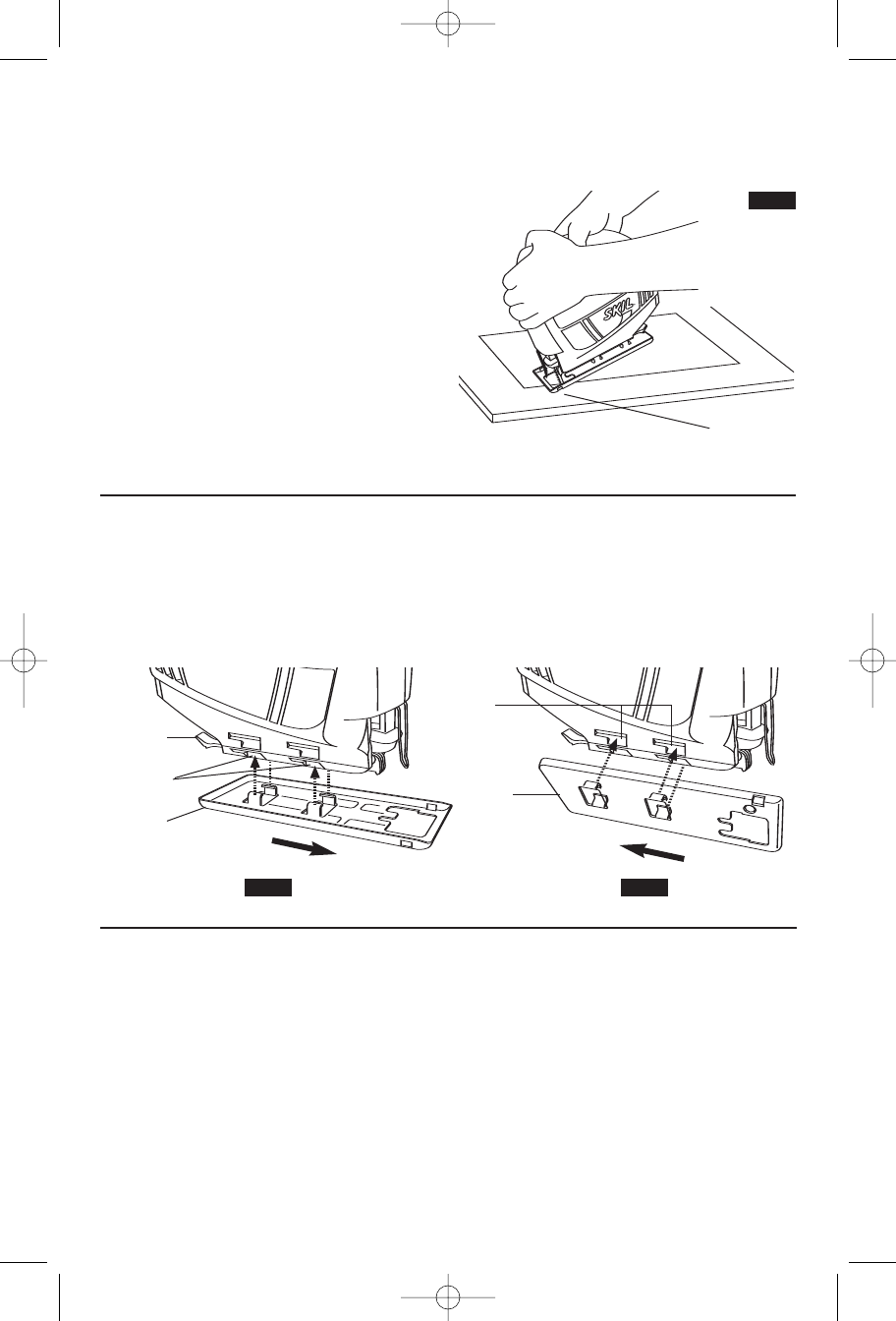
PLUNGE CUTTING
Plunge cutting is useful and time-saving in
making rough openings in softer materials. It
is not necessary to drill a hole for an inside or
pocket cut. Draw lines for the opening, hold
the saw firmly, tilt it forward so that the toe of
the saw foot rests on the work, but with the
b
lade well clear of the work. Start the motor,
and then very gradually lower the blade.
When it touches, continue pressing down on
the toe of the saw foot slowly pivoting the saw
like a hinge until the blade cuts through and
the foot rests flat on the work. Then saw
ahead on the line of cut line. We do not
recommend plunge cutting with a scroll blade
(Fig. 8).
To make sharp corners, cut up to the corner,
then back up slightly before rounding the
corner. After the opening is complete, go back
to each corner and cut it from the opposite
direction to square it off. Do not try to plunge
cut into hard materials such as steel.
-9-
BEVEL OR ANGLE CUTTING
Disconnect the cord from the power source
and remove the blade.
The foot can be adjusted to cut at 0˚ or 45˚
degrees only on the right side of the tool.
To Adjust foot to 45˚, depress and hold tab on
backside of tool, slide foot firmly toward front
of tool and remove foot from 0˚ notched in
base (Fig. 9).
Align foot with 45˚ notches in base, and slide
foot firmly toward back of tool, and click into
place using the tab (Fig. 10).
FIG. 10FIG. 9
FOOT
RELEASE
TAB
FOOT
0˚ SLOT
45˚
SLOT
FOOT
METAL CUTTING
When cutting metal clamp material down. Be
extra certain that you move the saw along
slowly. Use lower speeds. Do not twist, bend,
or force the blade. If the saw jumps or
bounces, use a blade with finer teeth. If the
blade seems clogged when cutting soft metal,
use a blade with coarser teeth.
For easier cutting, lubricate the blade with a
stick of cutting wax, if available, or cutting oil
when cutting steel. Thin metal should be
sandwiched between two pieces of wood or
tightly clamped on a single piece of wood
(wood on top of the metal). Draw the cut lines
or design on the top piece of wood.
When cutting aluminum extrusion or angle
iron, clamp the work in a bench vise and saw
close to the vise jaws.
When sawing tubing and the diameter is
larger than the blade is deep, cut through the
wall of the tubing and then insert the blade
into the cut rotating the tube as you saw.
TOE OF
FOOT
FIG. 8
SM 1619X02133 12-06 12/12/06 2:30 PM Page 9


















